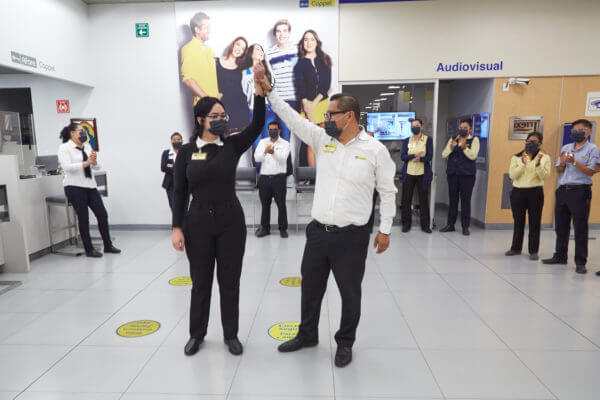Employee recognition may have once been seen as an afterthought—an occasional ‘good job’ from the boss or thank-you from a coworker. Now, business leaders are becoming increasingly aware of the impact effective recognition can have on employees, and in turn, on the company.

According to a 2024 report from Gallup and Workhuman®, 42% of senior executives strongly agree that employee recognition needs to be a key part of their company’s employee retention and engagement strategy, up from 28% in 2022. It isn’t hard to see why, when this report also showed that employees who strongly agree they receive valuable feedback on their work are five times as likely to be engaged.
Moreover, employees who received high-quality recognition were 45% less likely to leave their jobs two years later. This can be critical, as turnover and low engagement can cost companies millions in lost productivity. Confirming this, a survey by Nectar revealed that over 70% of employees say frequent recognition would make them less likely to leave their company, and nearly 80% say it would make them more productive. Over 80% also agree it would boost their motivation, engagement, and job satisfaction.
However, while the potential benefits of employee recognition are impressive, it takes an effective strategy to yield these kinds of results. Recognition needs to feel authentic, or it can ring hollow or feel forced. One of the most powerful ways to do this is to embed recognition in the company’s culture, making it a natural way of communicating across the workforce.
How can organizations start building a culture of recognition that empowers employees and the company to thrive? Start with these three tips:
1. Combine recognition with learning to maximize efficiency and engagement
As corporate teams grapple with an ever-growing list of priorities, it always pays to look for strategies that perform double-duty, tackling multiple challenges at once. One of the best ways to do this with recognition is to integrate it with employee learning and development. With clear milestones of progress and completion, training and other L&D experiences make natural achievements to celebrate. And because virtually every employee engages with L&D, it’s an easy way to deploy recognition across the workforce.
Adding recognition to L&D can also be key to motivating employees to invest time in learning and building new skills. According to the latest Kahoot! Workplace Culture Report, 46% say their organization fails to acknowledge or reward their learning, but 90% say recognition would give them greater motivation to upskill.
2. Create a winning recognition strategy with gamification
Another critical mindset shift is to move from thinking of rewards as an incentive to finish a boring or uninspiring task, and instead start crafting rewarding experiences. Gamification can be a powerful tool here, harnessing the intrinsic motivation of friendly competition. While employees can participate individually, they can also compete in teams to promote more social connection at work, a key driver of employee engagement.
Employees can even work together on a cooperative challenge, encouraging participants to celebrate each person’s unique contributions and making everyone a winner. For greater efficiency, gamification can also be used for L&D, adding engagement and interactivity to standard tick-box training, and building in moments for achievement, recognition, and rewards.

3. Level-up recognition by leveraging technology
Leaderboards, company trophies, and photos of employees proudly displayed on a wall can be great, but technology now makes it possible to go far beyond these recognition methods. With technology, it’s easier than ever to create immersive and engaging experiences in which employees feel excited to participate and be recognized. For example, employees with valuable knowledge to share can organize digital contests to challenge their coworkers to learn and apply their new skills.
With easy-to-use technology, more employees can lead these sessions, showcasing their expertise while providing their coworkers with a genuinely enjoyable experience—making them workplace heroes. Digital tools can also enable every member of the organization to participate through their computer or mobile device, no matter their location, making recognition more inclusive in distributed teams.
By weaving recognition strategically into existing initiatives across the organization and taking advantage of technology, corporate leaders can embed effective recognition into the company’s DNA. The result is clear: a more engaged, motivated, and productive workforce, driven to bring their A-game to work and help propel their company to new heights.
Start celebrating employees and building a culture of recognition at your organization with Kahoot! 360!
This blog post is based on an article originally published on HR.com.




